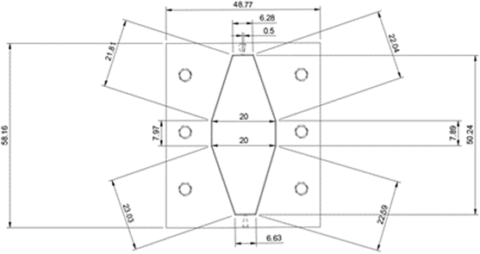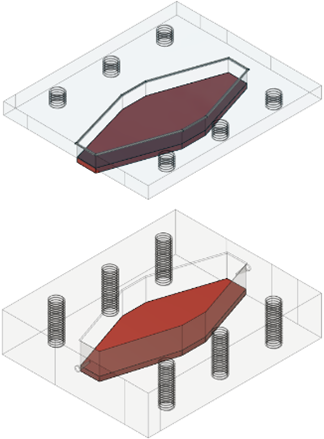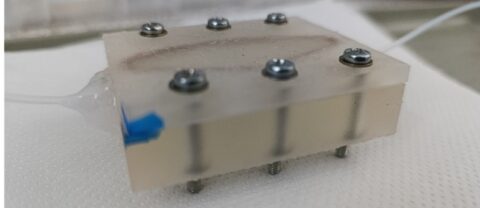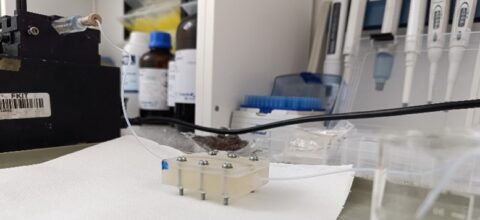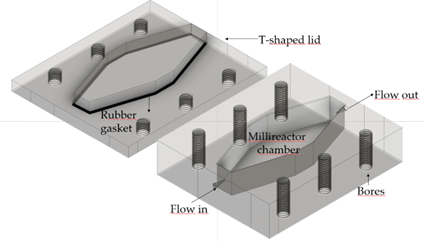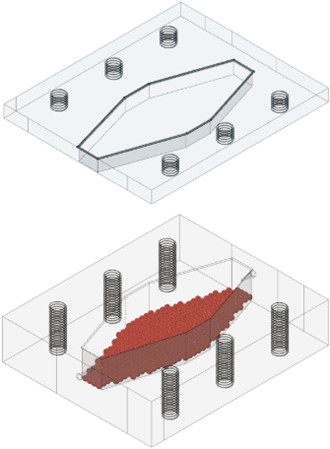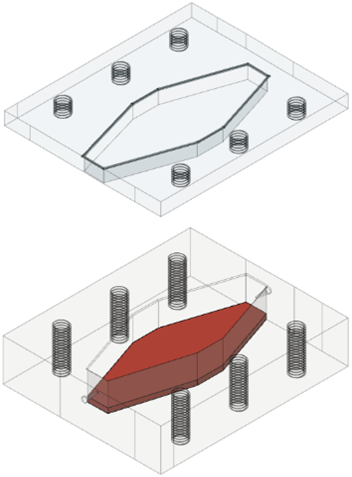
Multipurpose millireactor for efficient (bio)catalysis manufactured with additive 3D technology – 3D-printed millireactor
Author: VILIM MARIJAN BOROŠA, KRISTIAN KOŠTAN, RENATA VIČEVIĆ, IVAN KARLO CINGESAR, DOMAGOJ VRSALJKO, BRUNO ZELIĆ, ANITA ŠALIĆ
Company/Institution: Sveučilište u Zagrebu, Fakultet kemijskog inženjerstva i tehnologije
Country: CROATIA
e-mail: vborosa@fkit.unizg.hr, kkostan@fkit.unizg.hr, rvicevic@fkit.unizg.hr, icingesar@fkit.unizg.hr, dvrsal@fkit.unizg.hr, bzelic@fkit.unizg.hr, asalic@fkit.unizg.hr
The reduction in dimensions and the specific design of millireactors have led to numerous advantages and expanded their application possibilities compared to existing macroscopic reactor systems. The small dimensions of millireactors increase the multifunctionality of the entire system, as several physicochemical processes, reactions, separations and analyzes can take place simultaneously in a millistructured unit. Nowadays, 3D additive technology is available, allowing precise customization of different geometries for specific applications. The combination of the ability to produce different geometries using 3D printing with the advantages of millistructured devices has led to the development of 3D millireactors manufactured using additive technology (3D printed millireactor). In this way, millireactors have been created that enable application in various continuous reaction systems due to their adaptable design, i.e. in addition to the standard geometries of continuous millireactors, those that enable work with a packed catalyst bed, immobilized enzymes and magnetic nanoparticles have also been developed. For example, enzymes can be immobilized on one or both inner surfaces of the millireactor, which significantly increases the efficiency of biocatalytic processes. In addition, the 3D-printed millireactor enables continuous process control with minimal losses, making it ideal for applications such as (bio)chemical synthesis, sensor development, etc. Such an approach supports sustainable technological processes and ensures high efficiency with reduced resource consumption, making it attractive for a wide range of applications in industry and research.
